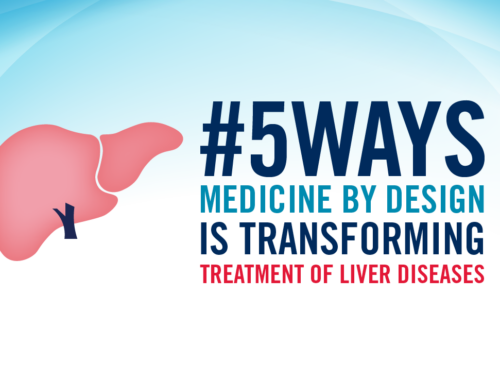
Image shows monocytes (green) associating with endothelial cells (red), which are cells that line the blood vessels, in the bone marrow. (Image provided by Clinton Robbins.)
The immune system maintains a delicate balance in the body. There are many different cell types, each playing an important role in keeping a person healthy.
If that balance is disturbed, negative impacts could follow. But, as new research published in Immunity shows, it may also be possible for researchers to tip that balance to get desired effects.
“Often therapies that target the whole immune system, steroids for example, are too broad and can leave people susceptible to other diseases or infections,” says Clinton Robbins, a senior scientist at Toronto General Hospital Research Institute (TGHRI), University Health Network (UHN). “Our thinking was, what if we actually look at populations of cells, and how they’re interacting with each other, and tweak them in very specific ways to get results.”
In the new study, funded in part by Medicine by Design, a strategy to selectively target immune cells is taking shape.
Robbins — who is also Peter Munk Chair in Aortic Disease Research at the Peter Munk Cardiac Centre at TGHRI — and his team are especially interested in a cell type called monocytes. They are white blood cells born in the bone marrow, a spongy tissue inside bones. Monocytes travel throughout the body, fighting infection.
Monocytes eventually grow into mature immune cells called macrophages. But, Robbins says, they also play a role in the normal function of the immune system that is not well understood. And during dysregulated immune responses, they can also contribute to disease.

Clinton Robbins, senior scientist at Toronto General Hospital Research Institute, University Health Network.
“Our focus in this work is, how do we control monocytes? And what effect does changing the number of monocytes have on the body?” Robbins, who’s also an associate professor of laboratory medicine & pathobiology at the University of Toronto, says.
To measure the impact of monocytes, the researchers suppressed a protein called Colony Stimulating Factor 1 (CSF1), which stimulates the body to produce monocytes. They suppressed CSF1 in three main cell types – endothelial, which are cells that line blood vessels; stromal cells, which are found in the bone marrow and connective tissue; and osteoblasts, cells that line the bone – and found interesting results in each area.
“When we knocked the CSF1 out of cells that line the bone, we saw loss of bone mass, which highlights the important role that macrophages play in bone health. And when we knocked it out of the other cell types, endothelial and stromal, we saw major changes in the number of monocytes patrolling the immune system,” says Robbins.
With this understanding, Robbins says, they have the beginnings of a roadmap that will help researchers understand where monocytes come from and what they do. This knowledge can aid in developing targeted approaches to manipulating the immune system to impact disease. The Robbins lab is also working with another Medicine by Design-funded investigator, Dr. Myron I. Cybulsky, and his lab at TGHRI, on this research.

Dr. Takuo Emoto, lead author of the new study, cardiologist and former post-doctoral fellow at Clinton Robbins’s lab.
Lead author on the study, Dr. Takuo Emoto, a cardiologist and former post-doctoral fellow at Robbins’s lab, says the study could have broad implications for treating diseases.
“This targeted approach to CSF1 modulation may lead to new therapeutic strategies that target specific cells to regulate the development of monocytes,” Emoto says. “Beyond CSF1, this study demonstrates that therapies that target specific areas of the body could be a good clinical option in the future.”
Robbins leads a multi-disciplinary Medicine by Design-funded team that is focused on similar questions about monocytes and macrophages in the context of abdominal aortic aneurysm (AAA). The team aims to develop strategies to control the generation of monocytes, which likely play a role in the development of AAA.
The long-term aim is to be able to apply these strategies in treating disease, and Robbins says this latest work is a step towards that goal.
“As an immunologist, I’ve always had an interest in innate immunity, and how we can use it in a targeted way to maintain health. This study, by answering fundamental immunology questions, gets us closer to being able to do that.”
Robbins credits partnerships and collaborations that have been fostered through Medicine by Design as an important driver of his research. As an example, his partnership with nanoparticles expert, Omar F. Khan, which he says brings exciting possibilities to his work, and came together because of the Medicine by Design connection.
About Medicine by Design
Medicine by Design builds on decades of made-in-Canada excellence in regenerative medicine dating back to the discovery of stem cells in the early 1960s by Toronto researchers James Till and Dr. Ernest McCulloch. Regenerative medicine uses stem cells to replace diseased tissues and organs, creating therapies in which cells are the biological product. It can also mean triggering stem cells that are already present in the human body to repair damaged tissues or to modulate immune responses. Increasingly, regenerative medicine researchers are using a stem cell lens to identify critical interactions or defects that prepare the ground for disease, paving the way for new approaches to preventing disease before it starts. Medicine by Design is made possible thanks in part to a $114-million grant from the Canada First Research Excellence Fund.






